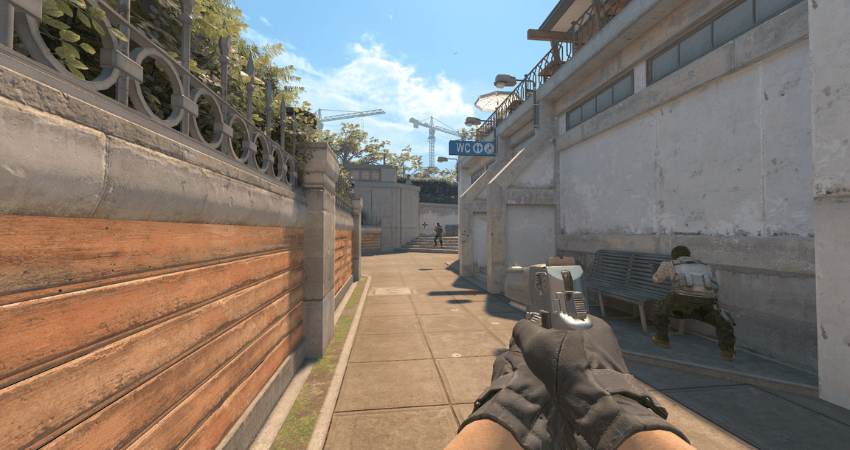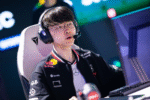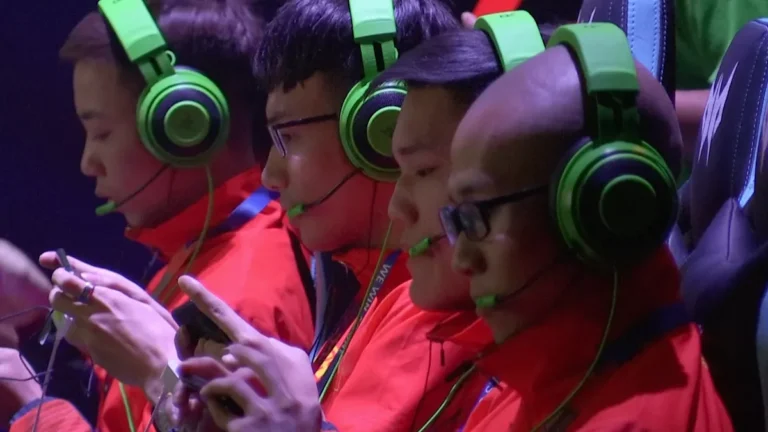The world of Counter-Strike 2 skin trading can be both exciting and intimidating. Whether you’re looking to upgrade your in-game inventory, collect rare items, or potentially make a profit, understanding the nuances of CS2’s skin economy is essential. In this comprehensive guide, we’ll walk you through everything from basic concepts to advanced strategies that can help transform you from a trading novice to a seasoned pro.
The transition from CS:GO to CS2 brought significant changes to the skin ecosystem, yet the fundamental mechanics of the marketplace remain largely similar. Before diving into trading strategies, it’s crucial to understand how this digital economy functions.
The Evolution from CS:GO to CS2 Skins
When Valve launched Counter-Strike 2 as the successor to the iconic CS:GO, players wondered about the fate of their beloved skin collections. Fortunately, all CS:GO skins transferred seamlessly to CS2, maintaining the same vibrant marketplace that had developed over the previous decade.
The skin market isn’t just about cosmetics—it’s a complex economy with items ranging from a few cents to tens of thousands of dollars. Some players view their inventories as digital investment portfolios, while others simply enjoy the visual customization these skins provide.
CS2 maintained the same rarity tiers from its predecessor, ranging from Consumer Grade (white) to Covert (red), with special categories for knives and gloves. The Source 2 engine upgrade brought improved visual fidelity to these skins, making some older designs even more appealing in the new lighting systems.
How Skin Values are Determined?
The CS2 skin marketplace operates on principles similar to real-world collectible markets, with supply and demand being the primary driving factors behind valuation.
Rarity Factors
Not all skins are created equal. Several factors influence a skin’s rarity and subsequent value:
- Drop Rate: Items with lower drop rates from cases naturally become more scarce and valuable.
- Collection Availability: Skins from discontinued collections or limited-time operations often appreciate in value over time.
- Special Patterns: Some skins have rare patterns (like Case Hardened “Blue Gems” or Fade percentages) that significantly increase their value.
Understanding these rarity factors helps you identify potentially undervalued items in the marketplace. For example, a seemingly ordinary AK-47 Case Hardened might be worth exponentially more if it has a high percentage of blue pattern—something casual traders might miss.
Wear Conditions and Float Values
One of the most nuanced aspects of CS2 skin trading is understanding wear conditions and float values. Each skin comes in different wear states:
- Factory New (0.00-0.07)
- Minimal Wear (0.07-0.15)
- Field-Tested (0.15-0.38)
- Well-Worn (0.38-0.45)
- Battle-Scarred (0.45-1.00)
The numerical range (0-1) associated with each condition is called the “float value.” Lower float values indicate less wear, with 0 being theoretically perfect condition. Some skins look dramatically different across wear ranges, while others show minimal visual differences.
Savvy traders know that float values near the boundaries between conditions can create arbitrage opportunities. For example, a Field-Tested skin with a 0.151 float (very close to Minimal Wear) might look nearly identical to a Minimal Wear item but cost significantly less.
Getting Started with CS2 Skin Trading
Now that you understand the basics of the skin marketplace, let’s set up your trading foundation properly.
Setting Up Your Steam Account for Trading
Before you can begin trading, your Steam account needs to meet certain requirements:
- Steam Guard Mobile Authenticator: Enable this security feature and wait out the mandatory 15-day holding period for new devices.
- Account in Good Standing: Ensure your Steam account has no trading restrictions or limitations.
- Purchase History: New Steam accounts must make a purchase and wait 7 days before trading.
Remember that Steam imposes a 7-day trade hold on newly acquired items, whether purchased from the Steam Market or obtained from cases. This policy aims to protect users but requires patience when building your trading strategy.
Once your account is properly set up, familiarize yourself with Steam’s trading interface. It’s straightforward but offers essential features like verification steps and trade offer links that you’ll use frequently.
Essential Tools for Skin Traders
Successful trading requires more than just the Steam platform—you’ll need specialized tools to make informed decisions.
Price Tracking Websites
No serious trader operates without reliable price tracking tools. Some essential resources include:
- CS2 Market: Tracks historical price data and market trends.
- FloatDB: Allows you to check specific float values and pattern indexes.
- CS2 Exchange: Helps find specific items across inventories.
These platforms provide crucial market intelligence that can help you identify opportunities and avoid overpaying. Historical price charts are particularly useful for spotting seasonal trends—many skins dip in value during Steam sales or major game releases when players sell items to fund new purchases.
Trade Platforms and Marketplaces
While Steam’s Community Market is the official trading platform, third-party sites offer additional features and sometimes lower fees. SkinsMonkey has established itself as a reliable platform for CS2 skin trading, offering competitive rates and a secure environment.
These third-party platforms typically offer benefits like:
- Lower commission fees than Steam’s 15%
- Instant trading without Steam’s 7-day hold
- Cash-out options to real-world currency
Remember that when using any third-party service, security should be your primary concern. Stick to well-established platforms with proven track records and robust security measures.
Effective Trading Strategies for Beginners
With your account set up and tools at hand, it’s time to develop your initial trading strategy.
Building Your Initial Inventory
Every trader needs to start somewhere, and building your first inventory requires some investment and smart choices:
Start small with a modest budget you can afford to risk. Many successful traders began with inventories worth less than $50.
Focus on liquid items—skins that sell quickly at stable prices. These typically include popular weapons like AK-47, M4A4, and AWP skins in the mid-tier price range.
Learn to spot “quick flip” opportunities where you can make small but consistent profits through minor price disparities across platforms.
Consider exploring which CS2 cases are best to open if you’re willing to take calculated risks. While case opening is generally not profitable long-term, strategic openings of newer cases can sometimes yield valuable items that jumpstart your inventory.
Understanding Trade-Ups and Their Value
The trade-up contract system allows you to exchange ten skins of the same quality for one of higher quality. This mechanic creates interesting economic opportunities:
Low-Risk Trade Methods
For beginners, these lower-risk strategies can help build inventory value steadily:
- The 10% Method: Never spend more than 10% of your inventory value on a single trade to manage risk.
- Volume Trading: Focus on making many small profitable trades rather than seeking one big score.
- Buy Orders: Place multiple buy orders slightly below market price and resell at market rate for small but consistent profits.
These methods won’t make you rich overnight, but they provide valuable experience while slowly growing your inventory with minimal risk of major losses.
Common Beginner Mistakes to Avoid
Many new traders sabotage their progress by making predictable errors:
- Emotional Trading: Never make trades based on emotional attachment to skins or FOMO (fear of missing out).
- Ignoring Fees: Always calculate platform fees into your potential profit margins.
- Neglecting Research: Don’t buy items without checking their price history and volume trends.
Perhaps the most common mistake is rushing—successful trading requires patience and discipline. Resist the urge to force trades when no good opportunities present themselves.
Advanced Trading Techniques
Once you’ve mastered the basics and built a decent inventory, these advanced strategies can accelerate your trading success.
Market Trend Analysis
Professional traders don’t just look at current prices—they analyze patterns and anticipate market movements:
Major game updates, tournaments, and sales events create predictable market fluctuations you can capitalize on. For example, skin prices often rise in anticipation of major tournaments and fall during Steam sales.
Learn to read market volume alongside price. High volume at a stable price suggests strong market confidence, while low volume may indicate vulnerability to manipulation or sudden shifts.
Pay attention to Valve’s patterns of introducing new collections and retiring old ones, as these decisions directly impact supply and scarcity.
With experience, you’ll develop an intuition for market rhythms, but always back your hunches with data and analysis rather than speculation alone.
Investment Strategies for Long-Term Profit
While day trading can be profitable, some of the biggest returns come from long-term investments:
Case Investments
Cases often follow a predictable lifecycle: initial release at high prices, gradual decline as supply increases, then steady appreciation after being discontinued.
Investing in cases requires extreme patience—the most profitable case investments typically take 1-3 years to mature meaningfully. However, the potential returns can be substantial, with some discontinued cases appreciating by 1000% or more.
Before investing in cases, research their drop rates and unique skin offerings. Cases containing desirable knives or highly sought-after skins typically perform better as long-term investments.
Tournament Sticker Investments
Major tournament stickers represent another popular investment category:
- Tournament stickers are only available during specific events and never return.
- Player autograph stickers can appreciate dramatically if the player becomes more famous or retires.
- Team stickers can surge in value if the organization leaves the CS2 scene.
The key to successful sticker investment is timing—buy during the final days of the tournament when supply is highest and prices lowest, then hold until scarcity drives prices up months or years later.
Safety and Security in CS2 Trading
No trading guide would be complete without addressing the critical importance of security.
Identifying and Avoiding Scams
The CS2 trading community unfortunately attracts scammers using increasingly sophisticated techniques:
- Phishing Links: Never click on suspicious links, even if they appear to come from trusted friends.
- API Scams: Be extremely cautious about granting API access to third-party sites.
- Impersonation Scams: Verify the identity of trading partners through multiple methods.
A common red flag is any trade that seems too good to be true—because it invariably is. No legitimate trader will offer you extraordinary deals without clear motivation.
Secure Trading Practices
Using Trusted Third-Party Services
When trading high-value items, consider using reputable middleman services that specialize in securing high-stakes trades. While these services charge fees, they provide valuable insurance against scams.
Always verify the legitimacy of any trading service by checking community reviews, age of operation, and social media presence. Established platforms like SkinsMonkey have built their reputation on security and reliability.
Steam Guard and Account Protection
Your inventory is only as secure as your Steam account:
- Use a unique, strong password for your Steam account.
- Enable Steam Guard Mobile Authenticator and never share codes.
- Consider using a dedicated email address exclusively for your Steam account.
- Regularly check your API key list and revoke any you don’t recognize.
Remember that account security isn’t a one-time setup but an ongoing practice. Regularly review your security settings and stay informed about new scam techniques circulating in the community.
Conclusion
Trading CS2 skins effectively combines market knowledge, strategic thinking, and disciplined execution. Whether you’re looking to gradually upgrade your play skins or build a substantial trading operation, the principles remain the same: research thoroughly, trade patiently, and prioritize security.
The CS2 skin market continues to evolve, offering both opportunities and challenges for traders at all levels. By applying the strategies outlined in this guide and continuously expanding your knowledge, you can navigate this dynamic marketplace with increasing confidence and success.
Remember that even professional traders occasionally make mistakes or face losses—what separates successful traders from unsuccessful ones isn’t a perfect record but the ability to learn from setbacks and adapt strategies accordingly.
Now that you’re armed with this knowledge, take your first steps into the fascinating world of CS2 skin trading with confidence!







Leave a Comment